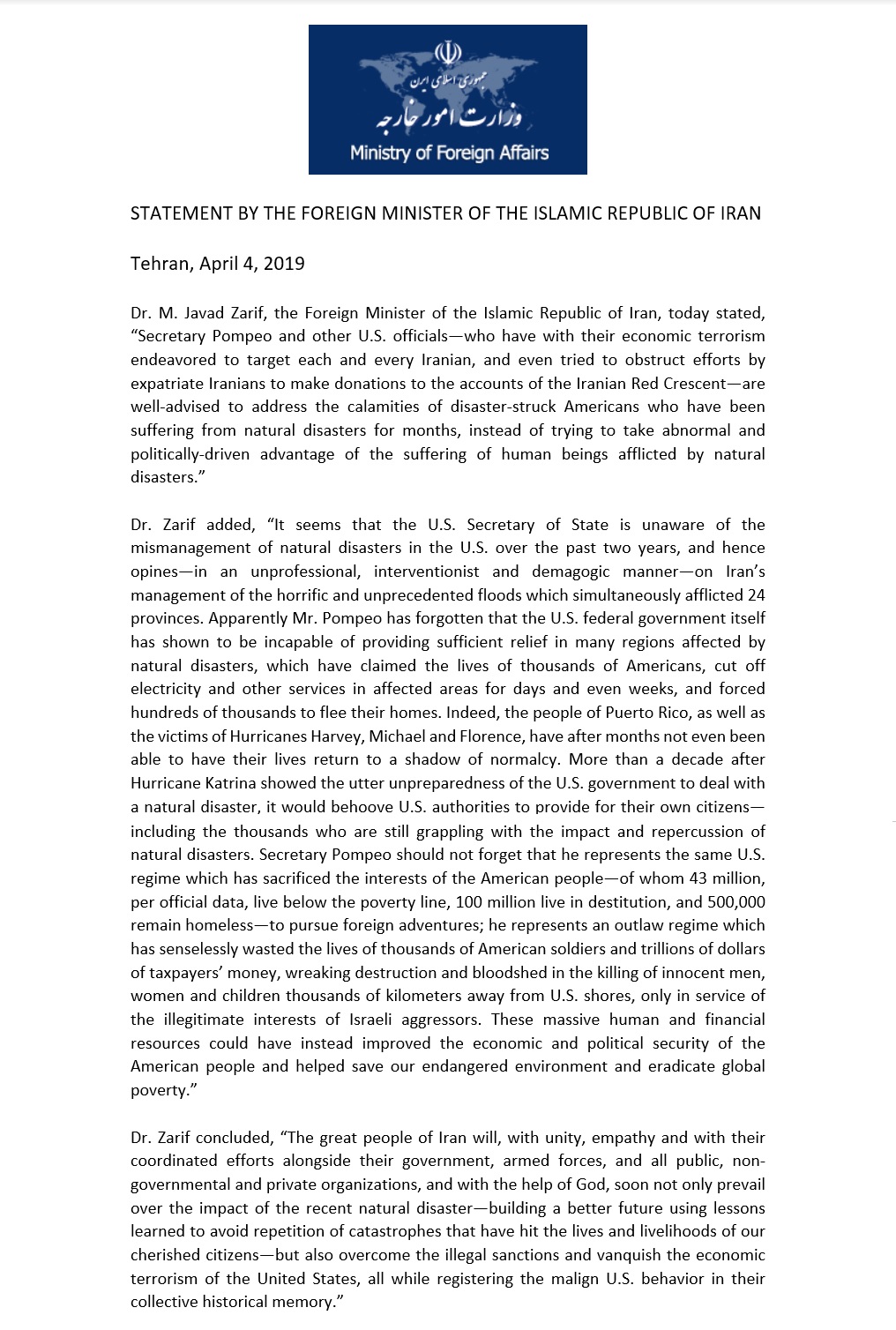In late March and early April, flash floods killed dozens of people in southern Iran. The worst rains in at least a decade ravaged 20 of Iran's 31 provinces. At least 25,000 homes were destroyed, and another 60,000 were damaged. On April 2, U.S. Secretary of State Mike Pompeo issued a statement that sympathized with the victims but also blasted Iran's government for mismanagement and its poor treatment of environmentalists.

Secretary of State Mike Pompeo: U.S. Support for the Iranian People in Response to Floods
On behalf of the American people, we offer our condolences to the victims of the recent floods in Iran. These floods once again show the level of Iranian regime mismanagement in urban planning and in emergency preparedness. The regime blames outside entities when, in fact, it is their mismanagement that has led to this disaster. They even jail environmentalists for attempting to help Iran prepare for these very issues. The United States stands ready to assist and contribute to the International Federation of Red Cross and Red Crescent Societies, which would then direct the money through the Iranian Red Crescent for relief.
Iranian Foreign Minister Mohammad Javad Zarif tweeted a response in which he accused Washington of “economic terrorism.”
FAKE NEWS: @SecPompeo claim that US "ready to assist @ifrc, which would direct money through Iranian Red Crescent for relief"
— Javad Zarif (@JZarif) April 2, 2019
REAL NEWS: As @ICRC President noted, Iranian Red Crescent can't receive any funds due to illegal US sanctions. US should own up to its ECONOMIC TERRORISM pic.twitter.com/rFjVDdrc4O
Zarif was referring to comments by Ali Asghar Peyvandi, the head of the Iranian Red Crescent Society. “Prior to the [reimposition of U.S.] sanctions, we had some Red Crescent accounts connected to SWIFT, and we sought international aid through them. However, at present, these accounts have been sanctioned and there is no possibility for money transfers from other countries,” he said on March 30.
On April 4, Zarif followed up with lengthier statement condemning Pompeo's remarks.
My response to the unprofessional, interventionist and demagogic comments of @SecPompeo on the devastating floods—and the humanitarian rescue and aid operations—in Iran. pic.twitter.com/OV3vHsKyae
— Javad Zarif (@JZarif) April 4, 2019

Many parts of Iran are susceptible to flooding due to a decades-long drought, which has left the soil unable to absorb much water. But the latest floods were also attributed to poor urban planning and inadequate safety measures. Buildings and roads were constructed too close to rivers. The floods have caused especially heavy damage to agriculture. The chief of the agriculture ministry’s crisis manage department, Seyyed Mohammad Mousavi, estimated losses at some $180 million for March. On April 2, authorities ordered the evacuation of more than 70 villages in oil-rich Khuzestan. The provincial governor, Gholamreza Shariati, warned than dams were already 95 percent full. "With the possibility of dams overflowing, we have made preparations to accommodate 100,000 people," Peyvandi told state television.
